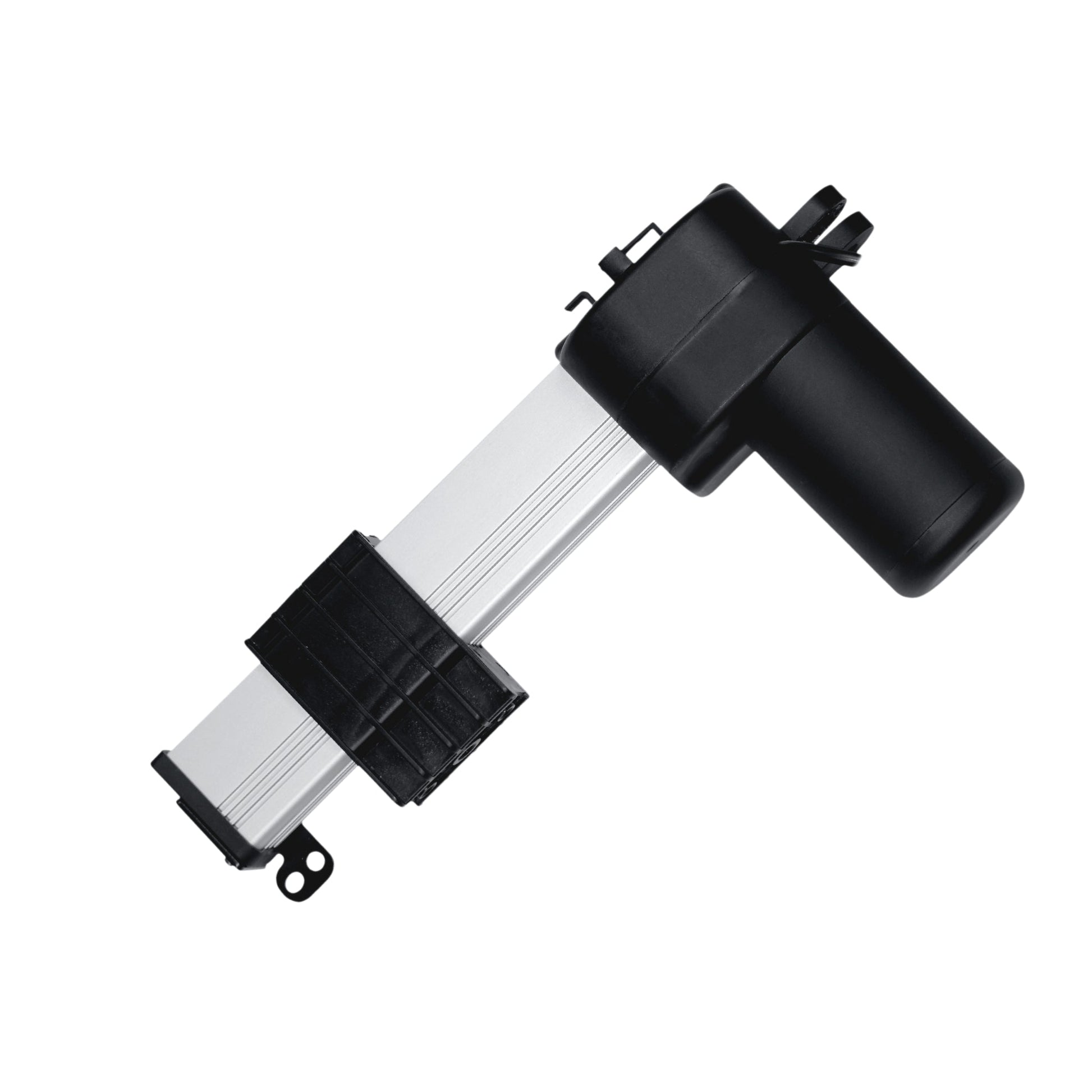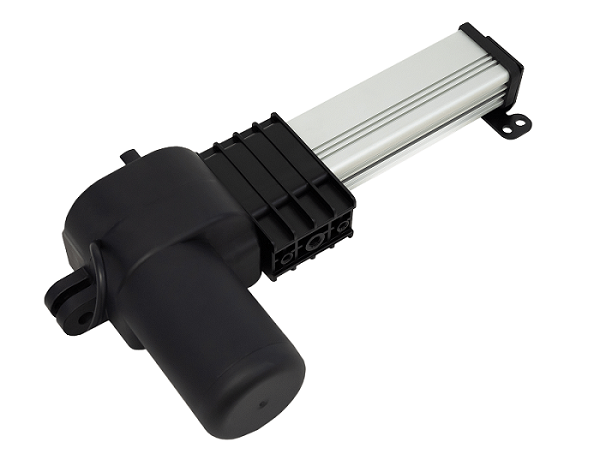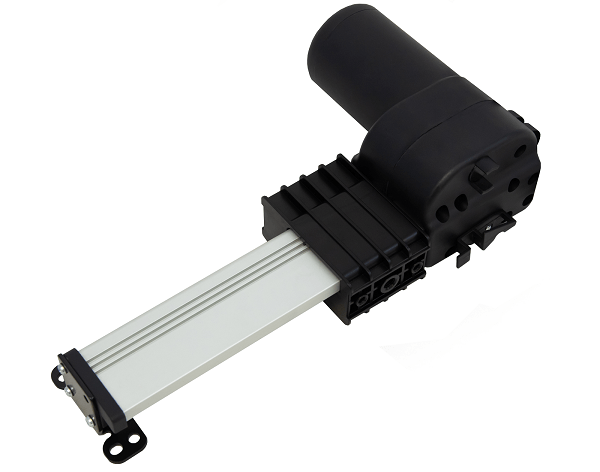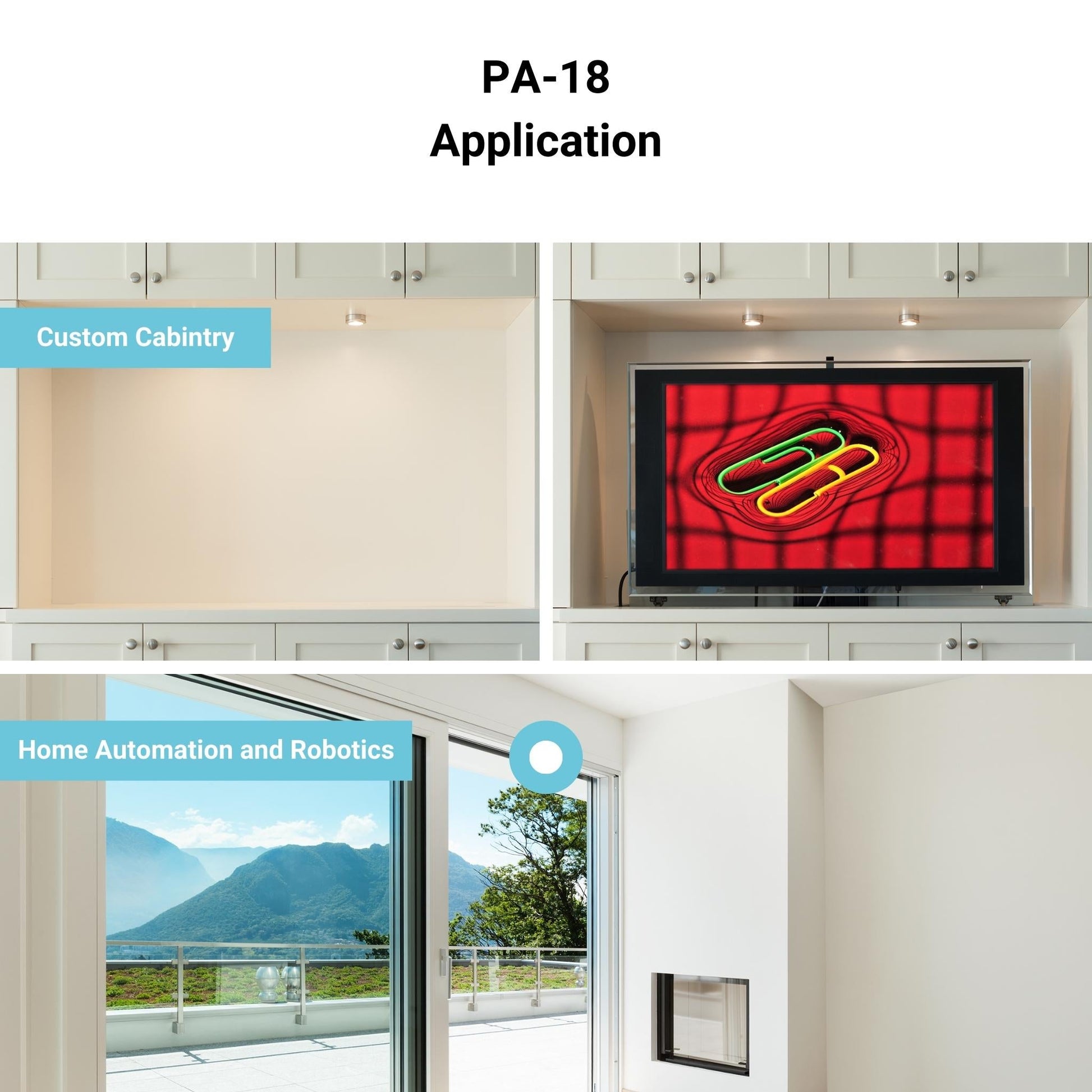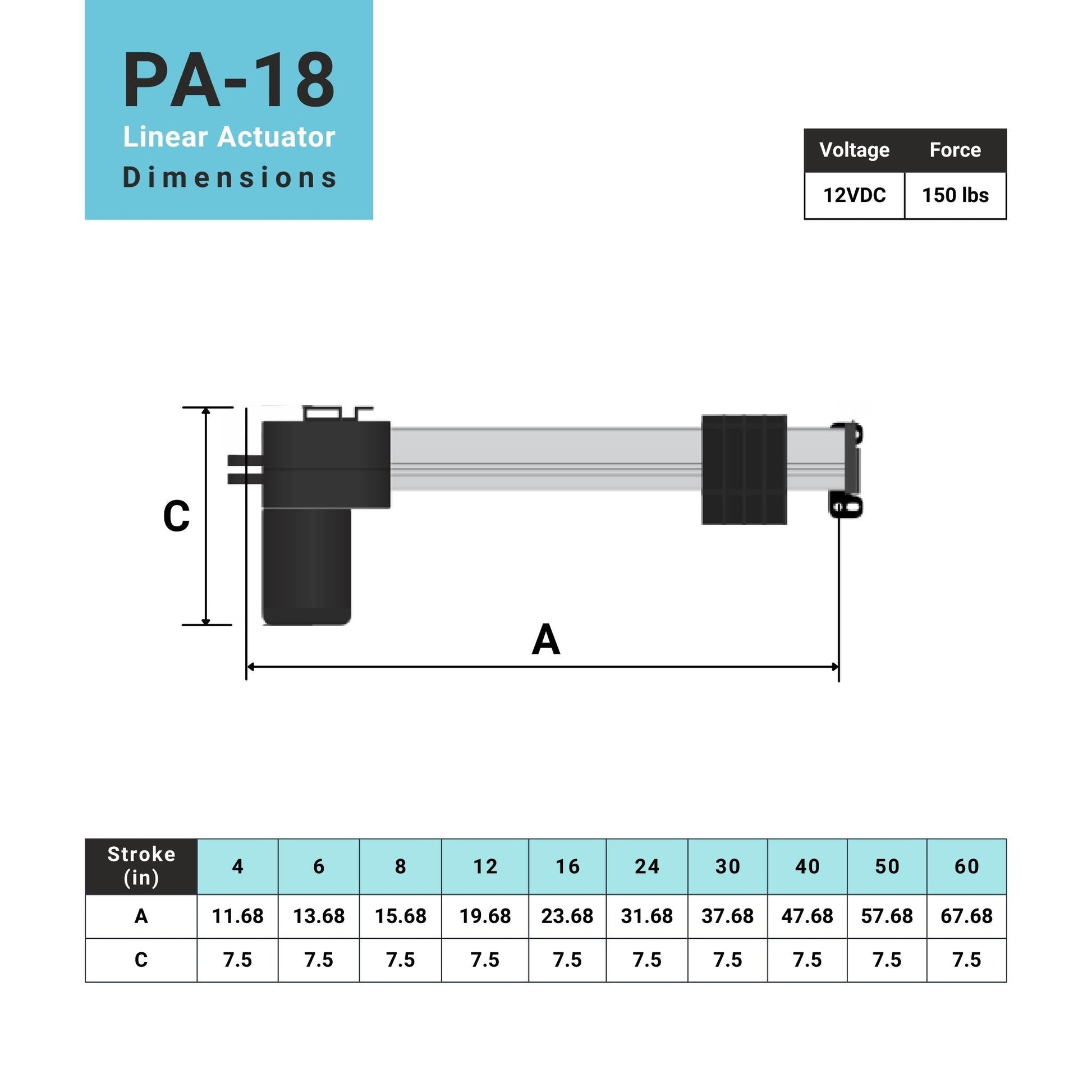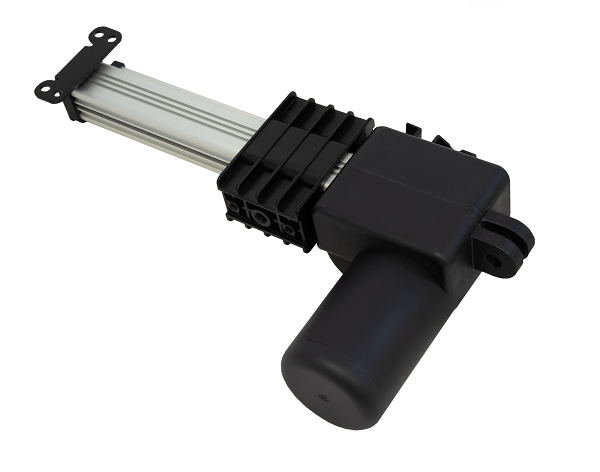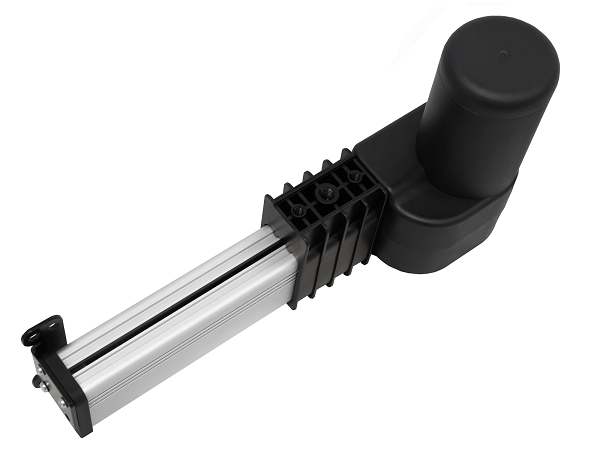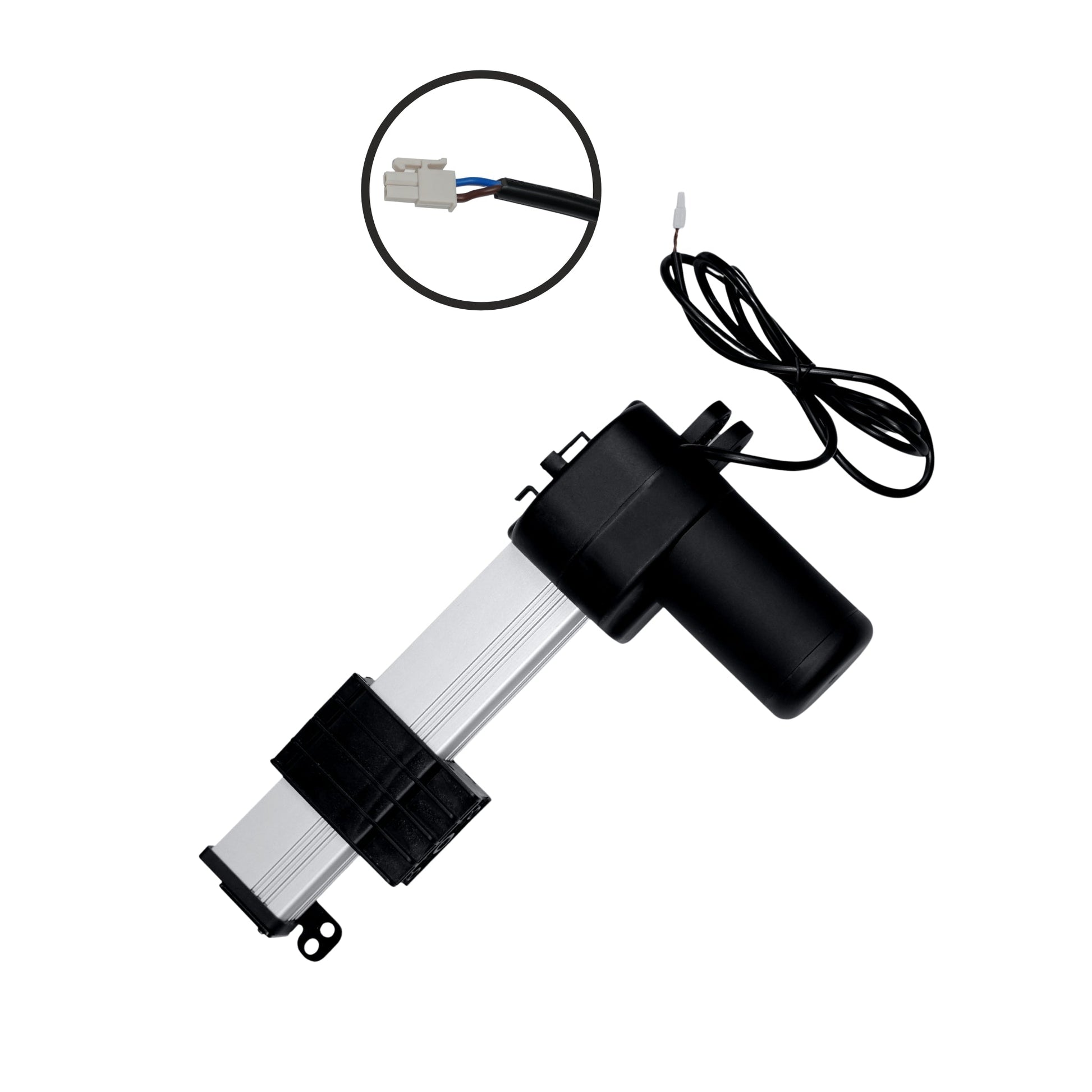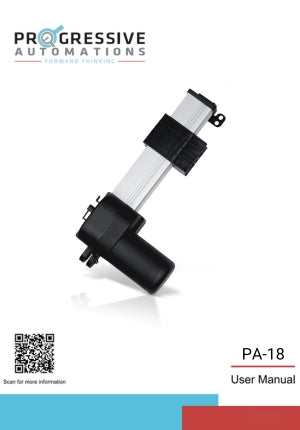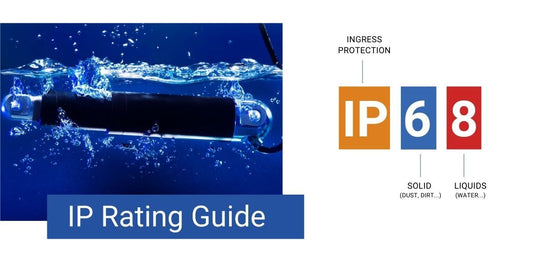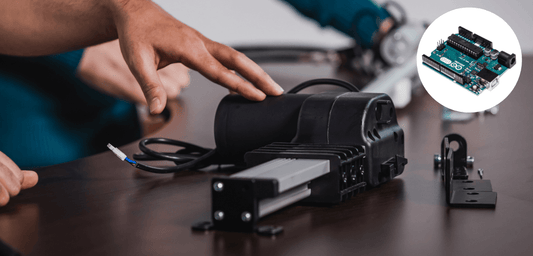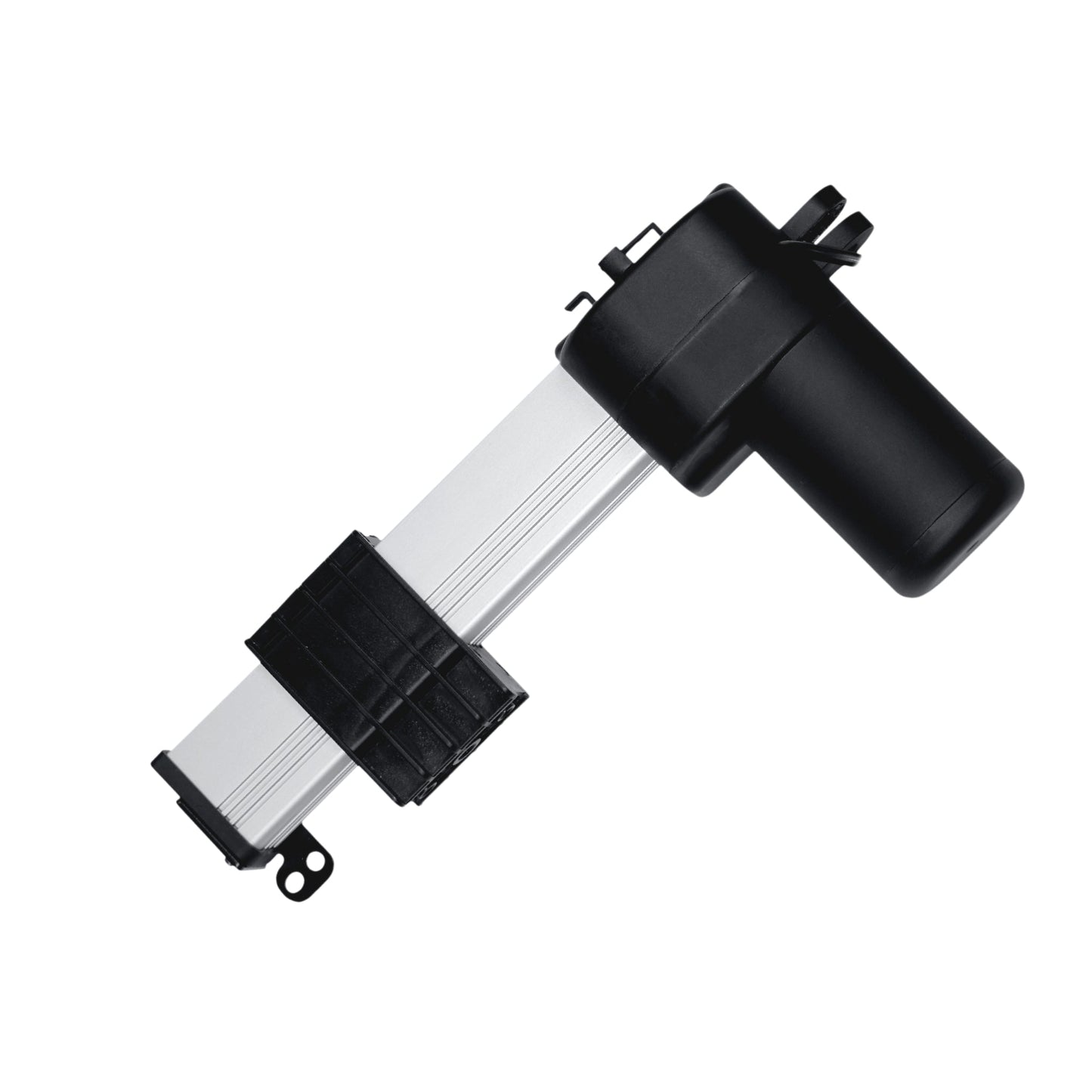
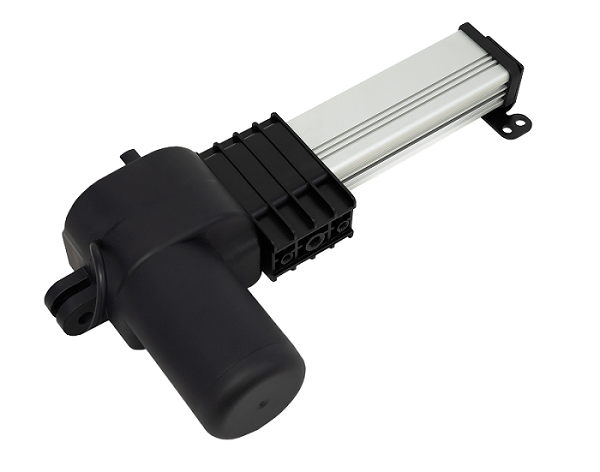
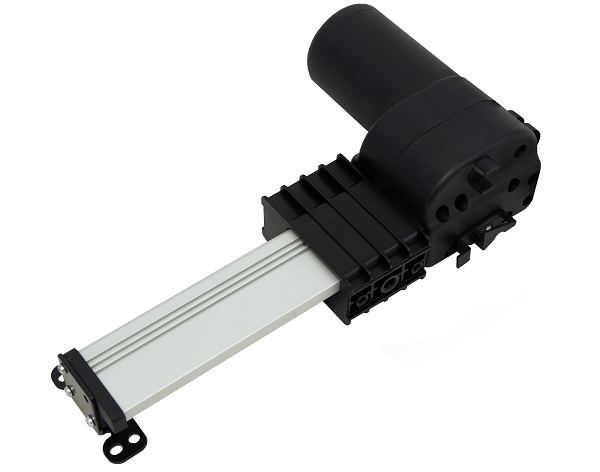
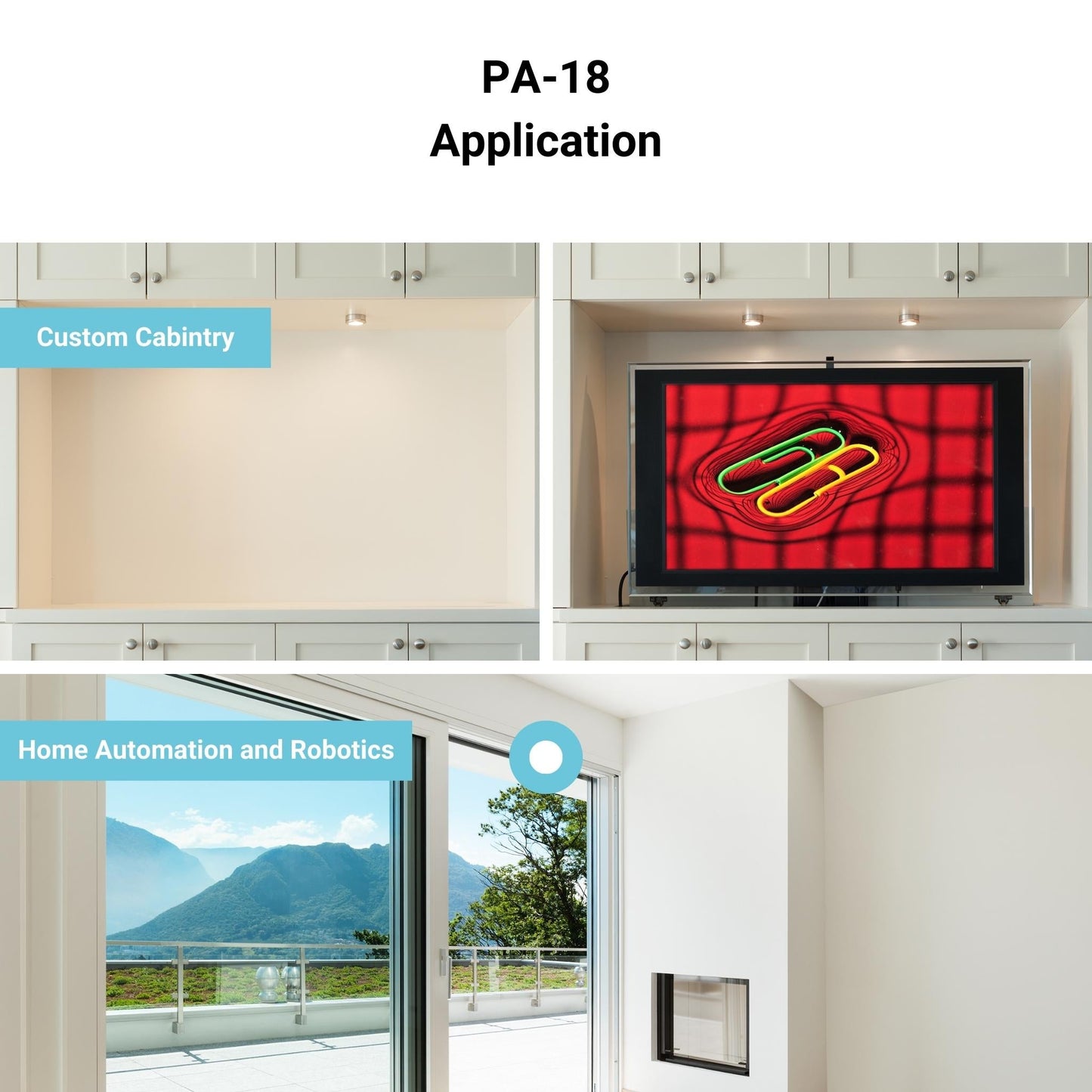
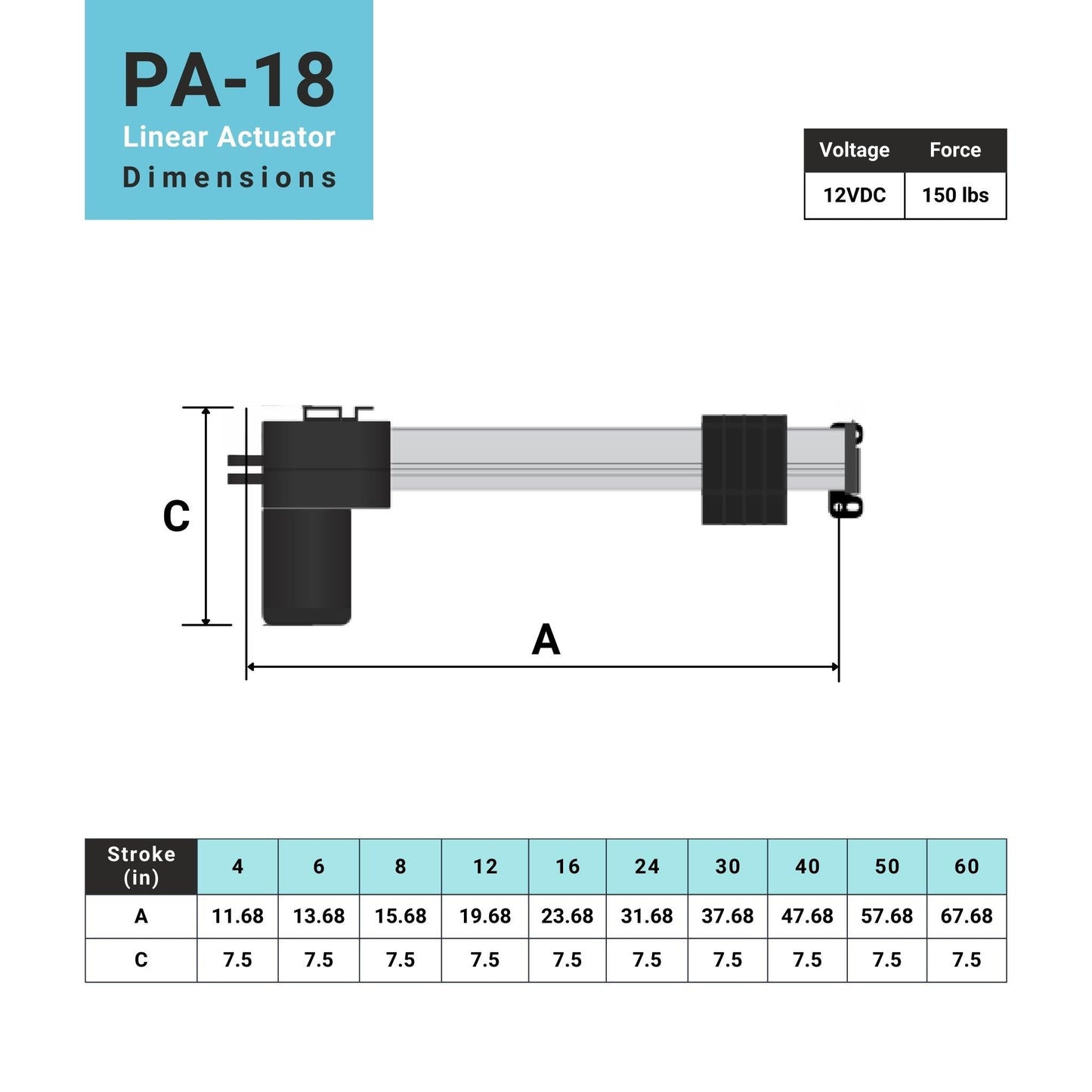
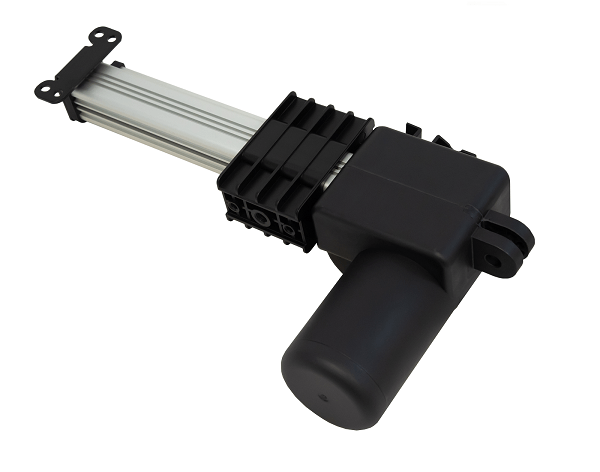
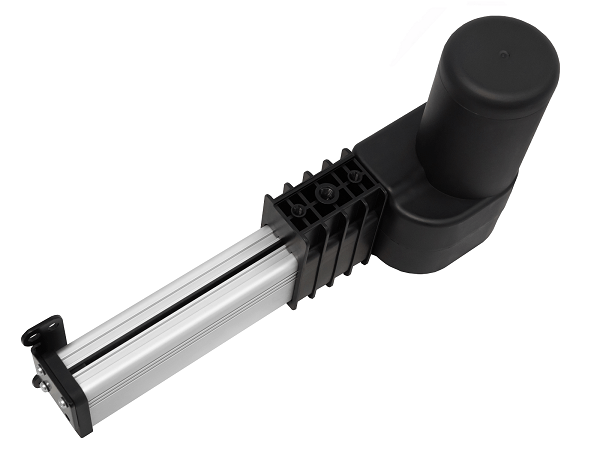
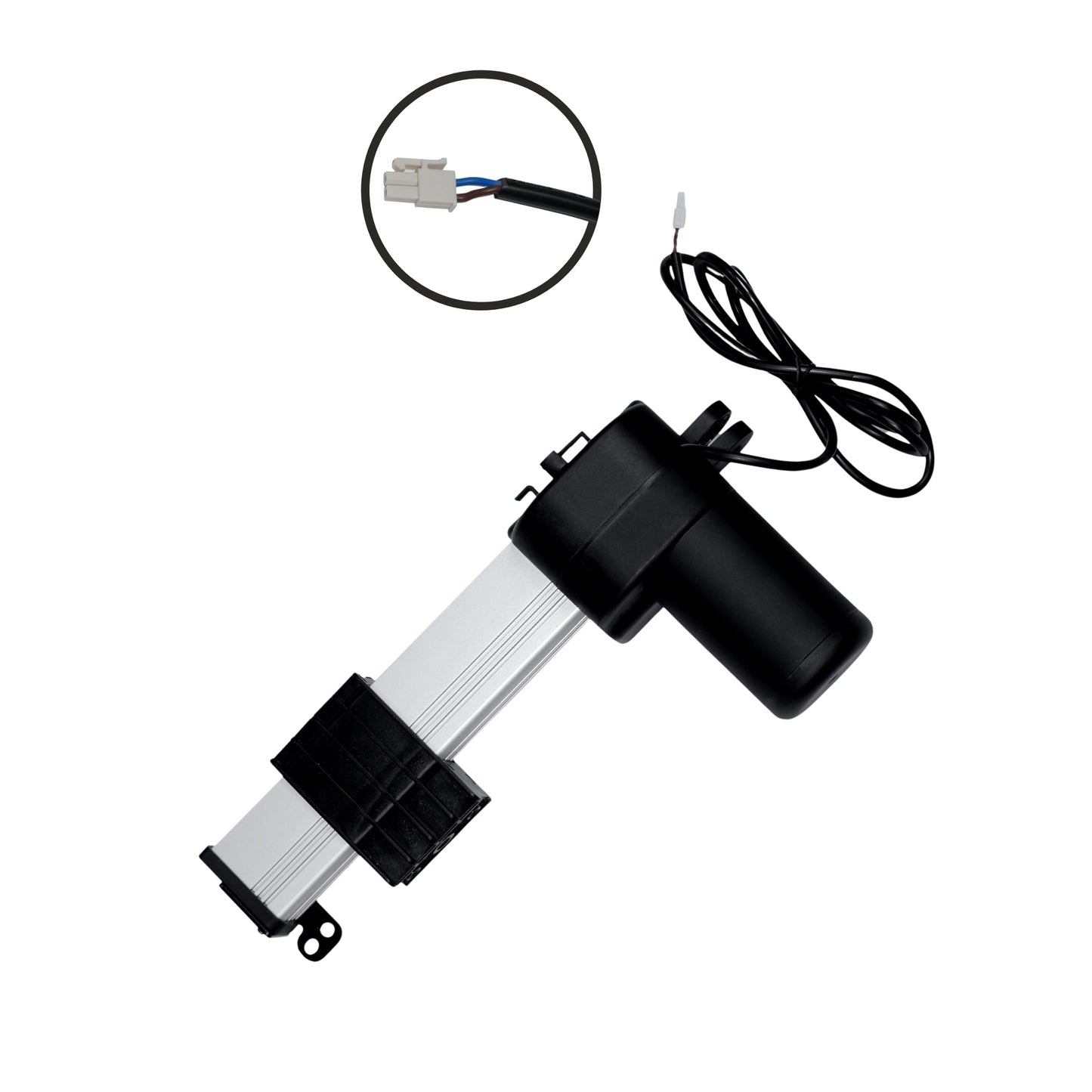
PA-18 Specifications
The PA-18 Track Actuator utilizes a unique track linear motion design that allows for applications that require fixed mounting points. We’ve specifically designed this unit to overcome common challenges found in many track linear actuator solutions, such as:
- Mechanical Wear and Tear: Many track linear actuators are prone to early mechanical failures over time. The PA-18 actuator addresses this with robust construction and quality motors designed for longevity.
- Safety Features: Built-in limit switches ensure the actuators automatically shut off electrical power when reaching the end of full retraction and extensions.
- Plug-n-play Integration: The PA-18 actuator has a Molex Mini-Fit Jr 2-Pin Connector to allow for quick and easy installation.
Key Benefits and Features of the PA-18
- Versatile Force Ratings: Designed with reliability and high force capabilities to handle 668 N dynamic and 445 N static force.
- Track Actuator Design: The unique construction allows for applications that require fixed mounting points.
- Low Current Draw: The DC motors draw 8.0 A fully loaded to ensure high efficiency in any application and avoid excessive power drain.
- Integrated Limit Switches: Built-in, non-adjustable limit switches ensure precise control of the actuator's motion, enhancing safety and reliability
- Low Noise: The operating noise of <48 dBA makes this solution suitable for quiet indoor spaces in customer-facing applications.
PA-18 Specifications
The PA-18 Track Actuator utilizes a unique track linear motion design that allows for applications that require fixed mounting points. We’ve specifically designed this unit to overcome common challenges found in many track linear actuator solutions, such as:
- Mechanical Wear and Tear: Many track linear actuators are prone to early mechanical failures over time. The PA-18 actuator addresses this with robust construction and quality motors designed for longevity.
- Safety Features: Built-in limit switches ensure the actuators automatically shut off electrical power when reaching the end of full retraction and extensions.
- Plug-n-play Integration: The PA-18 actuator has a Molex Mini-Fit Jr 2-Pin Connector to allow for quick and easy installation.
Key Benefits and Features of the PA-18
- Versatile Force Ratings: Designed with reliability and high force capabilities to handle 668 N dynamic and 445 N static force.
- Track Actuator Design: The unique construction allows for applications that require fixed mounting points.
- Low Current Draw: The DC motors draw 8.0 A fully loaded to ensure high efficiency in any application and avoid excessive power drain.
- Integrated Limit Switches: Built-in, non-adjustable limit switches ensure precise control of the actuator's motion, enhancing safety and reliability
- Low Noise: The operating noise of <48 dBA makes this solution suitable for quiet indoor spaces in customer-facing applications.
Following a set of standards is crucial for businesses to ensure their products and services can meet a level of quality that promotes customer satisfaction. At Progressive Automations, we aim for nothing but the best for our customers and strive toward continual improvements. Because of this, we are excited to announce that Progressive Automations is now ISO 9001:2015 certified!
Quality You Can Trust – Learn More2D/3D models

PA-18 Data Sheet
Videos
Related blog articles:
